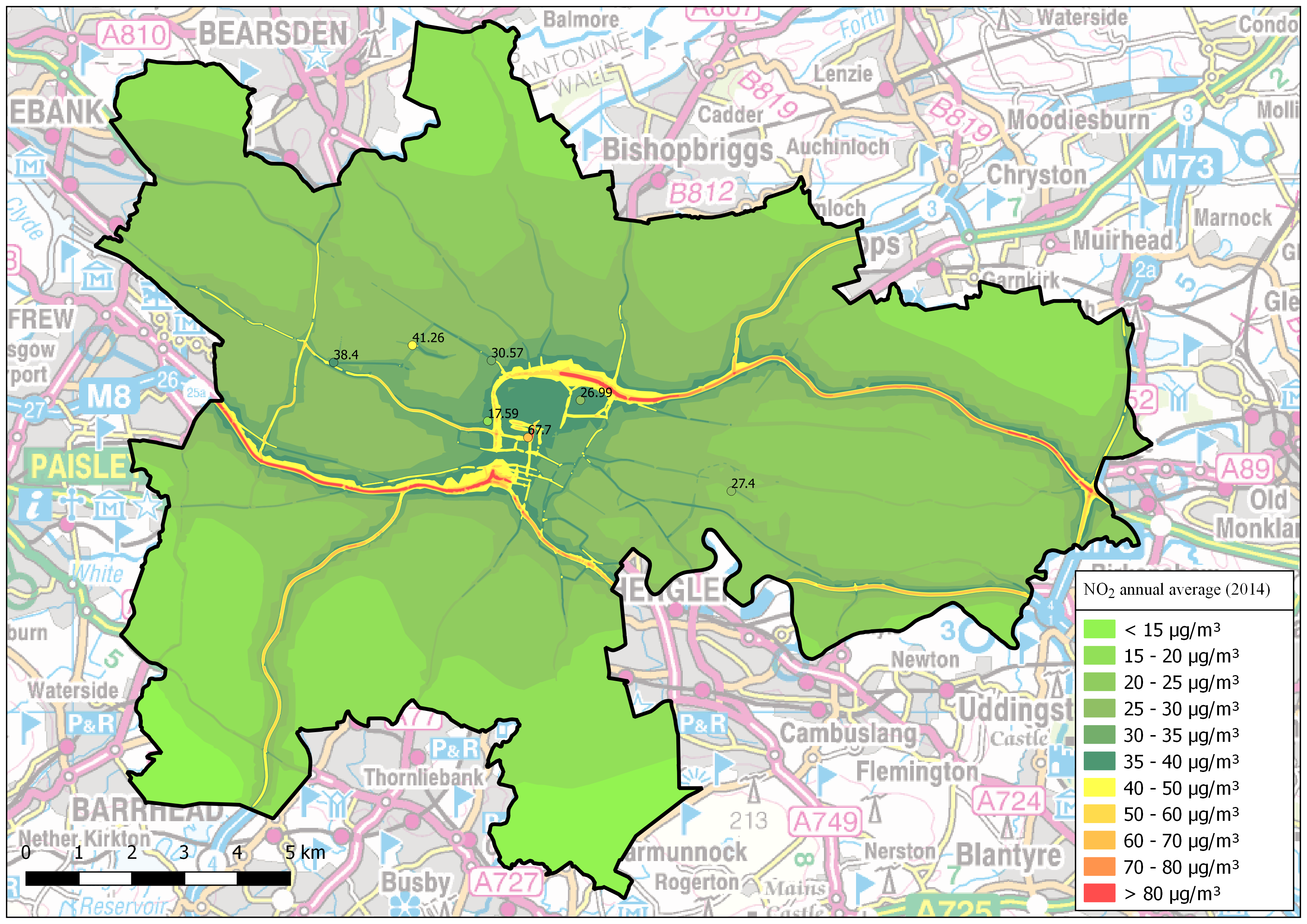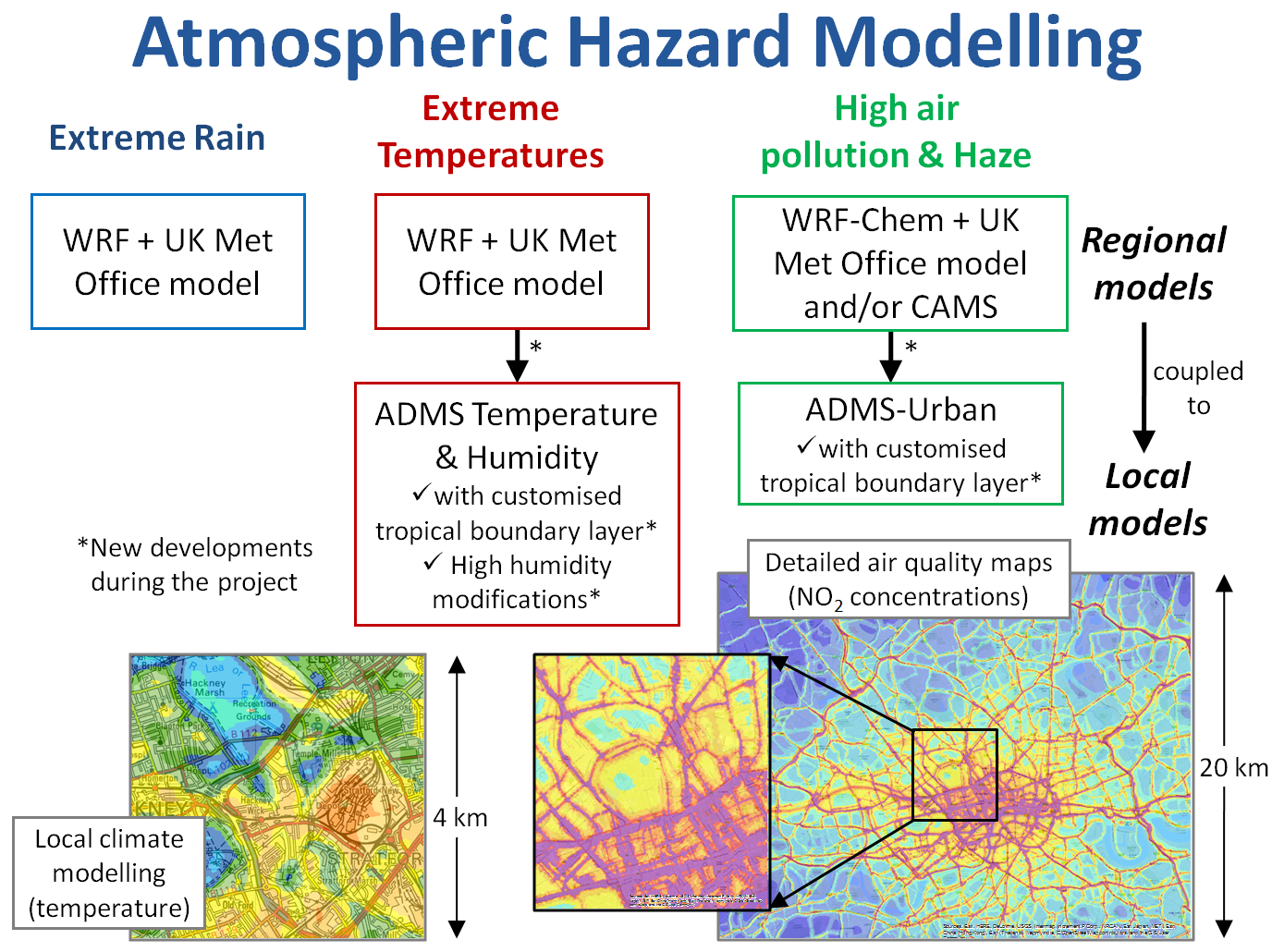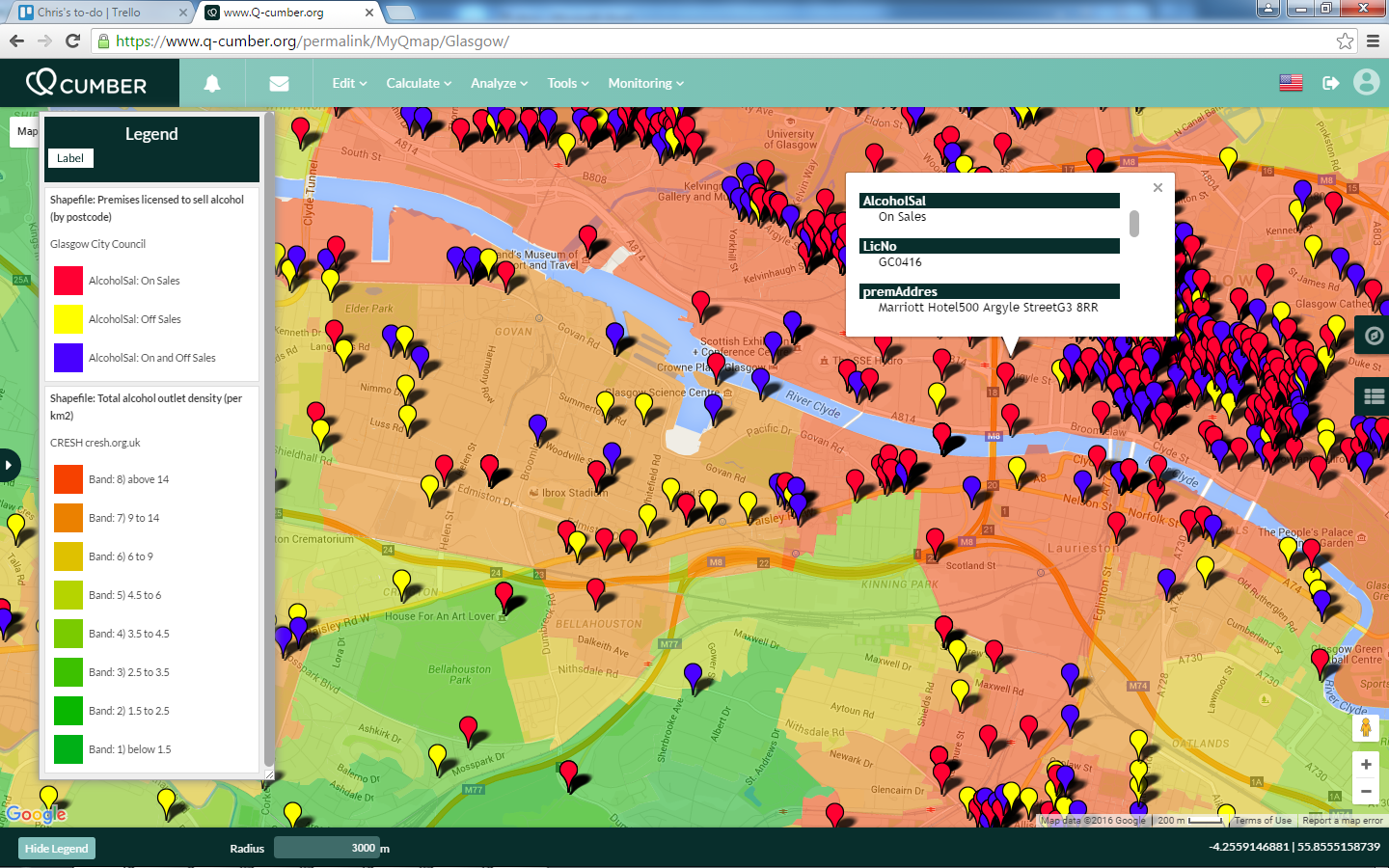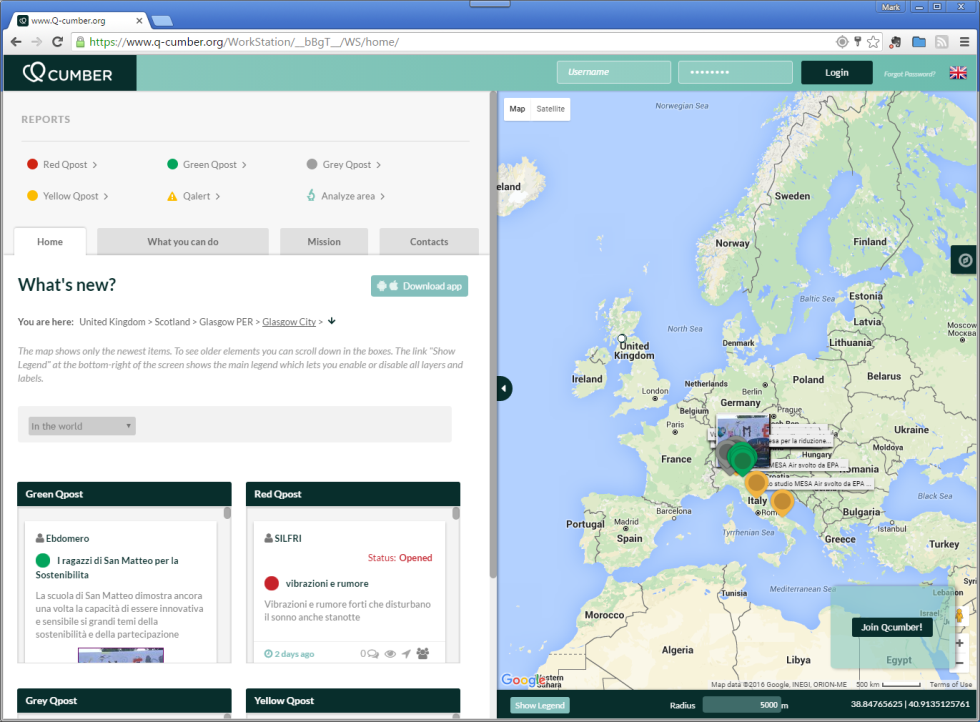
- Overview
- Atmospheric dispersion
- Atmospheric chemistry
- Urban air quality
- Regional to local air quality modelling
- Vehicles and roads
- Aviation
- Emissions
- Urban heat island
- Atmospheric boundary layer
- Wind energy
- Hazardous releases
- Inverse dispersion modelling
- Net Zero
- Model evaluation
- Smart cities
- Web platforms
- Older projects
- CERC co-author publications
- CERC software publications
- Presentations
Smart cities
Quick links: QCumber-EnvHealth tool PRAISE-HK Disaster Resilient Cities
Much of our research enables cities to become smarter and more sustainable, by providing near-real-time forecasts of air quality and wind energy, by encapsulating advanced scientific research in computer models, by improving understanding of the urban heat island, urban air quality, and by studying the environmental impacts of road traffic and aviation.
This section presents some research projects with a particularly strong 'smart city' focus:
- QCumber-EnvHealth was a 24-month Innovate UK research and development project to develop a new software tool to quantify urban environmental exposure and health risks (completed October 2017).
- The PRAISE-HK project combines state-of-the-art technologies, air quality modelling, big data, exposure science and more, to provide the Hong Kong public with real-time air quality reports at the neighbourhood and street level.
- CERC and a team of UK and Malaysian organisations are working on a Newton-Ungku Omar Fund project to customise UK models to forecast physical hazards for Kuala Lumpur, and to develop a prototype multi-hazard platform for managing and communicating risks to enhance disaster resilience.
QCumber-EnvHealth: a new integrated decision-making tool for urban health and policy evaluation
QCumber-EnvHealth is a new software tool to quantify urban environmental exposure and health risks under different policy scenarios. It was developed under an Innovate UK collaborative research and development project that brought together business, universities and the public sector.
Decision-making and planning in rapidly growing urban centres require integrated assessment tools to determine impacts on environmental exposure, health and inequalities. However, there is a lack of integrated tools with which to determine current and future health risks and to evaluate policy options. In addition, despite the increasing availability of data, key datasets for such tools often have limited spatial detail since environmental monitoring is limited to a few urban sites and health microdata (such as confidential NHS records) has restricted access, and methods for linking exposure to health have not been exploited. This project addressed all these issues in the context of Glasgow to create a unique data platform for health policy and inequality related decision-making: "QCumber-EnvHealth".

NO2 annual average concentration for Glasgow over 2014 modelled with ADMS-Urban
The project brought together CERC and the Universities of Edinburgh, Glasgow and Strathclyde with Transport Scotland. CERC has extensive experience in software development, modelling and analysing city data, including environmental exposure modelling and the innovative "QCumber" data platform. The Universities have extensive research expertise in environmental exposure, human health and inequalities, including comprehensive high density measurement capabilities, the development of novel synthetic data estimation techniques for information rich health microdata and spatio-temporal health risk modelling. Close engagement with identified end-users at Glasgow City Council, Transport Scotland, SEPA, Future Cities Glasgow, Health Protection Scotland, and NHS Greater Glasgow and Clyde, was maintained throughout the project. The project ran from November 2015 to October 2017.
QCumber is an innovative open city data platform with crowd-sourcing and environmental tools, combining data from diverse sources into a user-friendly query framework. The platform was developed by the Italian SME Algebra and is rapidly expanding in Italy, having been adopted for crowd-sourcing by several cities.
QCumber was proven by CERC as a city data platform in a 2014 feasibility study funded by Innovate UK under Phase 1 of their Future City Solutions SBRI competition Data Challenge. Prototype platforms were created for the five cities who volunteered to participate in the ‘Data Challenge’ (Belfast, Birmingham, Cambridge, Ipswich and London) and demonstrated to the city authorities. All five city authorities were enthusiastic about the potential benefits of the system. An article about the feasibility study was published in GIS Professional magazine.
Learn more
- Reports (pdf) and Presentations (pdf) from the two QCumber-EnvHealth stakeholder workshops (27 September 2017, 13 June 2016)
- To access the public platform follow these instructions
PRAISE-HK: Hong Kong street-level air quality forecasting and exposure
CERC are partners in a 5-year air quality (AQ) & health project that will develop a real-time, urban AQ modelling system capable of analysing and forecasting pollution levels in Hong Kong down to individual street level. PRAISE-HK (Personalised Real-time Air quality Information System for Exposure – Hong Kong) is being led by the Hong Kong University of Science and Technology with contributions from a number of other Hong Kong partners and CERC, and is part of the HSBC 150th anniversary charity programme.
The Hong Kong forecasting system will use the CMAQ regional model with WRF meteorological data coupled to a Linux version of CERC's ADMS-Urban high-resolution air quality model with its Regional Model Link allowing calculation of air pollution forecast maps at street-scale resolution. The schematic shows how the project will progress.

GPS-based real-time estimates of pollutant concentrations will be made available to the public via a website and a mobile app. The app will provide personalised pollutant exposure information relating to different periods of the day, and will be able to predict exposure levels relating to routes and modes of transport selected by the user.
The project also includes measurements and characterisation of AQ variations in different indoor microenvironments around HK. Various community groups will be targeted to help them better understand how outdoor ambient air conditions impacts on indoor AQ. You can sign up for the PRAISE-HK newsletter if you wish to keep informed of the Hong Kong developments.
Disaster Resilient Cities: Forecasting Local Level Climate Extremes and Physical Hazards for Kuala Lumpur
Recent disasters in Malaysia have revealed poor coordination and weak capacity in the prediction of floods and landslides and there is concern over the occurrences of strong winds, air pollution (haze) and extreme temperatures. Development of forecasting capacity is now important for major cities, particularly in view of climate change. CERC have joined a consortium of 16 research and business organisations, 6 from the UK and 10 from Malaysia, in a project to customise climate and hazard models from the UK to forecast physical hazards common in Kuala Lumpur i.e. flash floods & river floods, landslides, sinkholes, strong winds, urban heat and local air pollution; test their viability; develop a prototype multi-hazard platform for managing and communicating risks to enhance disaster resilience; and promote the platform through outreach and marketing. This 34-month project is funded jointly by the UK and Malaysian governments through the Newton-Ungku Omar Fund, and is led by the University of Cambridge and SEADPRI-UKM.
The image shows how CERC’s local models ADMS-Urban and ADMS Temperature and Humidity will be coupled to regional models to forecast atmospheric hazards such as extreme temperatures, air pollution and haze.



